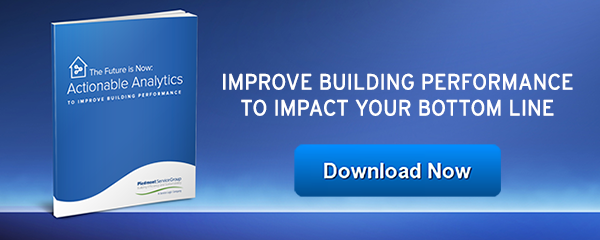HVAC Systems Best Practices for Data Centers
With the average data center accounting for more than 100-times the energy usage of any other commercial facility of equivalent size, it’s easy to understand why energy efficiency is of keen interest to companies in numerous industries. These buildings, dedicated to network servers, form the physical hub of billions of online interactions and store the data essential for day-to-day life.
 Downtime is not an option for these mission critical sites, and scaling them back is not strategically viable. Existing data centers continually grow to meet demand, and new data centers are springing up at an incredible rate.
Downtime is not an option for these mission critical sites, and scaling them back is not strategically viable. Existing data centers continually grow to meet demand, and new data centers are springing up at an incredible rate.
Why data centers need an energy-efficiency focus
Digital technology continues to evolve and the interconnected web of computers, mobile devices, Smart buildings, and cloud-based apps grows ever more integral to every aspect of our lives. This reality demands the need for quality data centers.
By optimizing a data center for energy efficiency, companies have been able to experience cost savings in the six-figure range, not to mention the tremendous ecological benefit that comes from reducing their energy usage to that extent.
These financial and environmental benefits make it possible to continue providing data centers that meet ongoing demand without causing undue damage to the environment or allowing costs to snowball out of control.
Is your commercial building Energy Star rated? Learn about the benefits for your building.
A focus on HVAC systems for data centers
There are many ways to approach energy efficiency for a data center, from the type, size, and configuration of stacks, power supplies, and cables to the way ventilation and cooling is installed – and even the direction of the vents.
In this article, we offer best practices for the installation, maintenance, and upgrading of HVAC cooling and ventilation equipment for data centers.
Air management
Setting up a strict hot aisle/cold aisle configuration for air exchange within the server and storage stacks is a key best practice for data center air management.
In its simplest form, a hot aisle/cold aisle configuration involves arranging servers on their racks - and racks in relation to each other - so that heat exhaust vents all blow into the same central aisle and cooling fans all draw from a separate aisle. The aisles are kept isolated from each other to eliminate mixing the air, and exhaust fans attached to the building’s ventilation system are situated to collect and expel the hot air efficiently. Likewise, air conditioning output vents are situated in the cool aisles to ensure that fans on each piece of equipment have continual access to cooler air.
This simple but powerful practice can double the cooling capacity of the data center’s entire HVAC system. According to Pacific Gas and Electric Company (PG&E), this one common-sense efficiency practice can reduce data center cooling costs by over 60% (when combined with an air-side economizer).
It sounds like common sense – and it is – but many older data centers that have grown organically over time have sections of the building where heat exhaust routinely mixes with cooled air, which threatens to harm the equipment and forces the cooling system to work much harder to maintain the appropriate temperature in the space.
The simple reason air management has an impact on energy efficiency is because the difference between the supply and return air temperatures is greater, which means the HVAC system can provide more cooling capacity for roughly the same electrical use. On the other hand, poor air management can reduce the cooling system’s capacity and efficiency by up to 50% due to common, resolvable issues in the building’s design or manufacture:
- Leaking floor tiles
- Leaking cable openings
- Poorly placed overhead supply vents
- Plenum obstructions under the floor
- Poorly placed rack exhausts
Air-side economizer
Another valuable means to dramatically improve the energy efficiency of a data center while maintaining optimal performance is to install an air-side economizer.
Essentially, an air-side economizer introduces an efficient method of switching from artificially cooled air to utilizing air from outside the building if and when it reaches a temperature cool enough to do the job. Of course, in a data center, the air also needs to be effectively filtered and humidified (dehumidified as the case may be) to keep it within the optimal performance range for the highly sensitive equipment.
Switching to outdoor air for cooling rather than artificially cooling the air results in tremendous energy savings.
Efficient control systems
Combining the power of the previous two best practices for energy-efficient data centers with the addition of modern digital control systems – that can be easily automated, monitored, and optimized minute-by-minute – amplifies the cost-savings.
With the inclusion of powerful controls, for instance, the decision to switch off the artificial cooling mechanism and switch on the air-side economizer can occur automatically in the moment the system’s sensors note that the outside air is cool enough to do so.
Similarly, sensitive automated control systems can easily distinguish a localized and temporary rise in temperature (such as a single rack component overheating or just working harder) from a need across the board to lower the building’s temperature. The control system can use variable speed fans and zone cooling to limit its response to the area that needs it, without wasting energy cooling the rest of the system more than necessary.
In addition, the latest digital control system technology allows in-depth analysis of energy usage data that can pinpoint literally thousands of ways to fine-tune a data center’s energy efficiency.
These three best practices really only scratch the surface of what’s possible when it comes to optimizing the energy usage of a data center. This is a skill set we’re proud to specialize in here at Piedmont Services Group, and we’d love the opportunity to discuss any data center HVAC needs you may have and help you determine where improvements can be made.
Or, download our ebook about the ROI of HVAC analytics and learn how our best practices apply to your data center energy goals.

